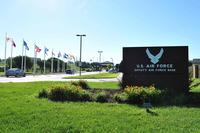No DoD assessment of Chinese military power would be complete without an update on the People’s Liberation Army’s ongoing effort to build an anti-ship ballistic missile; a weapon some hyperbolically claim could change the balance of power in the Western Pacific. We’ll set aside for the moment the issue of whether an individual weapon can dramatically alter the power balance between the U.S. military and any country x, and look at what the report says.
China has the “most active” land based ballistic missile and cruise missile program in the world, the DoD report says. The PLA is building a huge missile arsenal for precision conventional strike because it lacks, so far anyway, a stealthy strike aircraft. The vast majority of China’s ballistic missiles are of the short range (under 600km) SCUD type and lack “true precision strike capability.” And the vast majority of those missiles are aimed at Taiwan.
In the anti-access arena, China is building or buying medium-range ballistic missiles (1,000-3,000km): “to increase the range at which it can conduct precision strikes against land targets and naval ships, including aircraft carriers, operating far from China’s shores out to the first island chain.”
Regrettably, the report doesn’t tell us much about where the anti-ship ballistic missile is in terms of development progress:
“China is developing an anti-ship ballistic missile (ASBM) based on a variant of the CSS-5 medium-range ballistic missile (MRBM). The missile has a range in excess of 1,500 km, is armed with a maneuverable warhead, and when integrated with appropriate command and control systems, is intended to provide the PLA the capability to attack ships, including aircraft carriers, in the western Pacific Ocean.”
The maneuverable warhead and an over the horizon tracking and targeting system are the key components as the missile must have terminal guidance to hit a moving ship. Geoffrey Forden discusses some of the technical challenges in fine tuning the warheads guidance in an excellent post here; the comments section is very much worth reading as well.
As Forden notes, between the time an ASBM is launched and it arrives over a patch of sea in the Western Pacific a carrier could have moved 8 miles; the missile’s warhead must be maneuverable after the end of the boost phase and he discusses various options. China would be pushing the envelope technology wise and the missile would require extensive testing before was proven, he writes.
As for an advanced targeting system, which we’ve discussed before, the DoD report says:
“Over the long term, improvements in China’s C4ISR, including space-based and over-the-horizon sensors, could enable Beijing to identify, track, and target military activities deep into the western Pacific Ocean.”
-- Greg Grant










